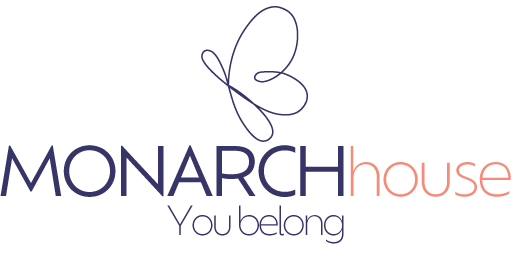Nine Integrated Treatment Approaches for Children with Autism Mississauga
It’s rare to treat a complicated medical condition from just one approach. Most adults will see an array of specialists for something even as straightforward as kidney stones. Children with autism have multiple options available for treatment as well. At Monarch House we have an interdisciplinary team that can help from multiple perspectives, be it occupational therapy, behavioural therapy,speech pathology, or psychotherapy. Autism Spectrum Disorder (ASD) is a complex neurodevelopmental condition that affects behaviour, communication, and social interaction. As understanding and awareness or neurodivergence grows, so does an emphasis on integrated treatment approaches. These methods combine several therapies to address the diverse needs of your child with autism. Overall, this acts to promote their overall development and quality of life.
Here are nine effective integrated treatment approaches for children with autism Mississauga.
- Occupational Therapy (OT)
It’s possible to combine occupational therapy with sensory therapy as a two-pronged approach. Many children with autism experience sensory processing challenges. Occupational therapy for children with autism can help develop daily living skills, while sensory therapy addresses sensory sensitivities. Working in unison, they create a holistic approach to improve self-care, fine motor skills, and sensory regulation.
- Cognitive Behavioural Therapy (CBT) And Mindfulness Techniques
There are times for action, and there are times for words. Sometimes just talking things through can be very powerful. It’s possible toreroute the way the synapses fire in our brain this way. CBT can help children with autism develop coping strategies and manage anxiety. Combining Cognitive Behavioural Therapy with mindfulness techniques can empower children to regulate their emotions, reduce stress, and improve focus. Some examples of mindfulness exercises are deep breathing and meditation.
- Social Skills Training With Peer-Mediated Interventions
Children with autism often do not have the gift of the gab. In fact, they can often tend to shy away from social encounters altogether. This means they are missing out on a big part of life. At Monarch House, we offer social skills training that focuses on teaching your child how to interact appropriately with others. Children can benefit from real-time feedback, roleplaying, and naturalistic learning experiences when paired with peer-mediated interventions. Just ask what we have available, at Monarch House we offer many social skills programs for children with autism.
- Speech And Language Therapy With Augmentative And Alternative Communication (AAC)
There are multiple verbal and non-verbal approaches to try when supporting a child with autism. Speech therapy is key for enhancing communication skills. Speech-generating devices, picture exchange systems and other integrated AAC methods provide your child with alternative ways to communicate. This ensures there is less frustration and more positive interactions. When a child is able to effectively communicate, it makes self-reporting of their condition and state of mind a reliable metric in the observations.
- Family-Centred Therapy
At Monarch House we believe in getting the whole family involved in your child’s program, be it the siblings, the parents, and even the grandparents. Incorporating family members into the treatment process is crucial for success. Family-centered therapy can improve family dynamics and enhance your child’s social and emotional development. Providing education and support at home and at school starts with the involvement of parents and siblings in the therapeutic process,
- Play Therapy With Naturalistic Teaching Strategies
Who says that therapy can’t be fun? There’s one discipline that believes the more fun your child with autism is having, the better.Play therapy allows your child to develop social skills and express themselves in a comfortable environment. When integrated with naturalistic teaching strategies, such as using everyday situations to teach skills, it’s possible to see the results. At Monarch House, we strive to foster learning in a fun and engaging way for your child.
- Physical Activity And Behavioural Interventions
Whether it’s running, swimming, playing tag, shooting hoops, skipping rope, or dancing, regular physical activity is highly beneficial for all children, including those with autism. At Monarch House we aim to combine physical activity with behavioural interventions. This acts to improve overall health, reduce anxiety, and enhance focus. If we want to promote social interaction and teamwork, we encourage activities like martial arts, badminton, or team sports.
- Medication Management With Psychotherapy
Sometimes talk therapy doesn’t seem to resolve the condition. In these cases, medication could be beneficial to manage symptoms such as anxiety or depression. At Monarch House, we start with an integrated approach that includes psychotherapy, individual therapy and family therapy. From here, we examine the underlying issues behind the behaviours and if beneficial, we can then support you in seeking other professional medical advise from your family doctor or pediatrician.
- Nutritional Support And Dietary Interventions
If you eat a healthy diet with fresh fruits, vegetables, nuts, seeds, minimal meat, and whole grains, you’ll notice a striking difference in how you feel. At Monarch House, we aim to integrate nutritional support with behavioural therapies that can help children with autism achieve better overall wellness, energy levels, and focus.While research is ongoing, some families find that dietary changes can have a positive impact on their child’s behaviour and health.
At Monarch House we are committed to an integrated treatment approach to help your child with autism. We believe (many scientists do too) that an integrated approach for children with autism acknowledges the multifaceted nature of the disorder. By combining various services and approaches, such as speech pathology, occupational therapy, behavioural therapy, and psychotherapy, caregivers and practitioners can create personalized plans that cater to the unique strengths and challenges of each child. Collaboration among professionals, families, and educators is essential for fostering a supportive environment where children with autism can thrive and reach their full potential.


